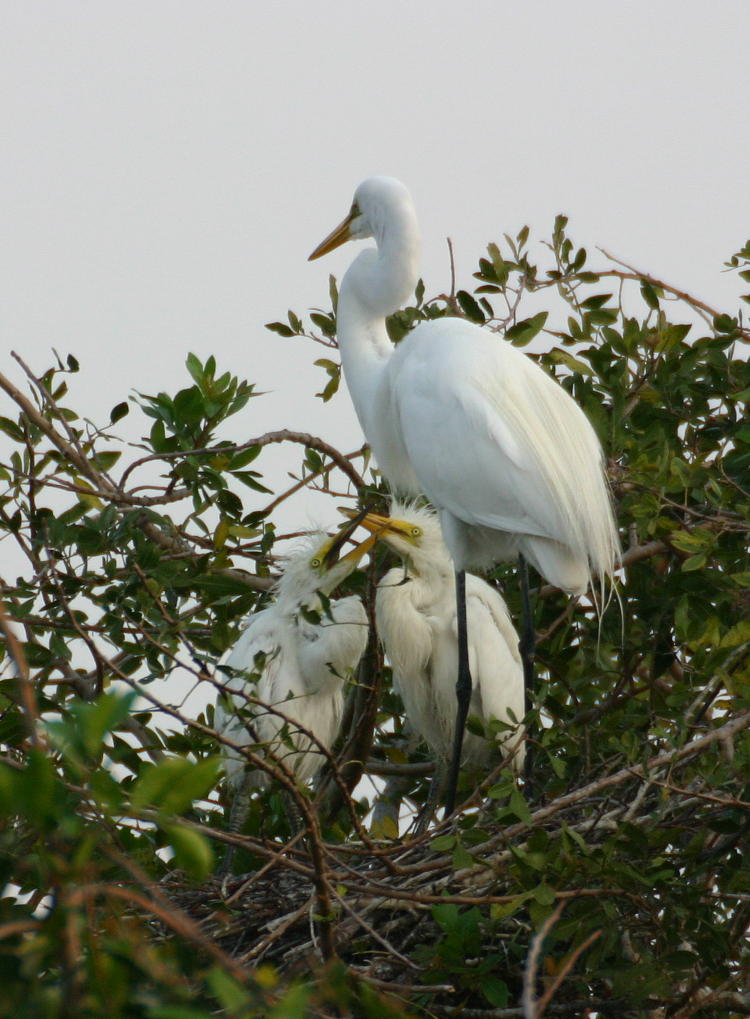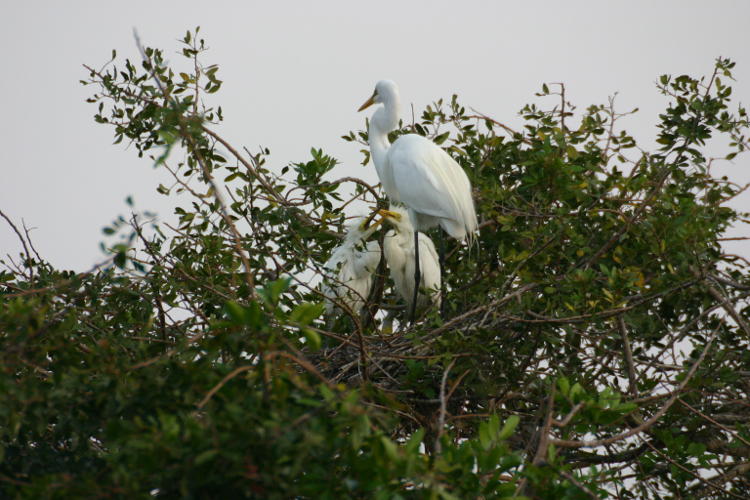Slow week blog-wise, unfortunately – been wrapped up in too many other things. I did shoot a few video clips, which may appear here eventually when I have a more coherent plotline, but little else of nature-photography-production value (although I had three students so, you know, still plugging away.) For now, it’s storytime, so let’s get past the whining, shall we?

The time is April, 2009. The place: Venice Area Audubon Society Rookery in Venice, Florida, perhaps the most amazing locale in the US to photograph wild birds. The Girlfriend and I had made our first (and so far only) trip to Florida together and had gotten up before sunrise to be down here at first light, which is well worth the effort. I’ve talked about this place before, but it bears repeating. On a small pond on public works land in the middle of Venice sits a small island, maybe the footprint of a medium-sized house, so completely covered in trees and bushes that the ground is literally not visible, and it is here that many species of birds have found their promised land. It is so ridiculously crowded with birds that it has to be seen to be believed, and no place else have I ever observed nests so damn close together, like a Tokyo tenement building. I had fretted that we were arriving in April, well past the nesting season, which shows you what I know, since we witnessed every stage of reproduction on that single day, from nest-building to fledging out. As The Girlfriend’s introduction to bird photography, well, she still talks about it in awe.
Here, we have a parent great egret (Ardea alba) with two young, very close to fledging age but looking like a pair of crones shrieking warnings of impending doom. Which wasn’t far from the mark – they were instead importuning the parent for food in the wheezing, clattering way of egrets. The humidity that morning was pretty dense, so the sky was featureless and the sunrise light a bit muted; you can see the faintest hint of yellow on the adult’s back, but no real golden-hour effects that morning.
When going through the digital stock for bird photos, this is notable in that there are very few images for this day, though I shot a ton of photos. The reason was, as soon as the light came up to a decent level, I switched off to slide film and handed the digital body over to The Girlfriend – she has more digital photos in her folders than I have that day, but I have a few pages of slides, so we’re good. And this is a detail crop to show off the expressions of the harpies young-uns, but the full frame is below, just to give the right idea. For the best view, a set of binoculars or a focal length exceeding 250mm is recommended, but then again, if you’re into birding those are a given anyway.

By the way, I need to return to do video, because it adds several dimensions to the whole thing, not the least of which is sound. As you might imagine, the cacophony of territorial calls, hungry fledglings, and warning croaks is stunning, especially first thing in the morning. And after we had spent close to two hours out there, we returned to the motel room to get ready for breakfast (which is a pretty typical schedule for nature photography.) The TV was on, with a special about birding, and we instantly recognized the spot where we’d just been shooting as it appeared onscreen, even with the tighter closeups of bird activity – it’s pretty distinct. Alas, no film crews were there when we were, so no appearances of either of us, but plenty of other bird photographers were around, many of them clustered around the base of a palm tree hosting a woodpecker’s nest, hoping for a peek at the fledglings when they appeared in the opening. I’d waited a short while alongside them without a sign, and then left them to their pursuits – I have a tendency to avoid crowds and catch what’s happening where no one else is paying attention.



















































